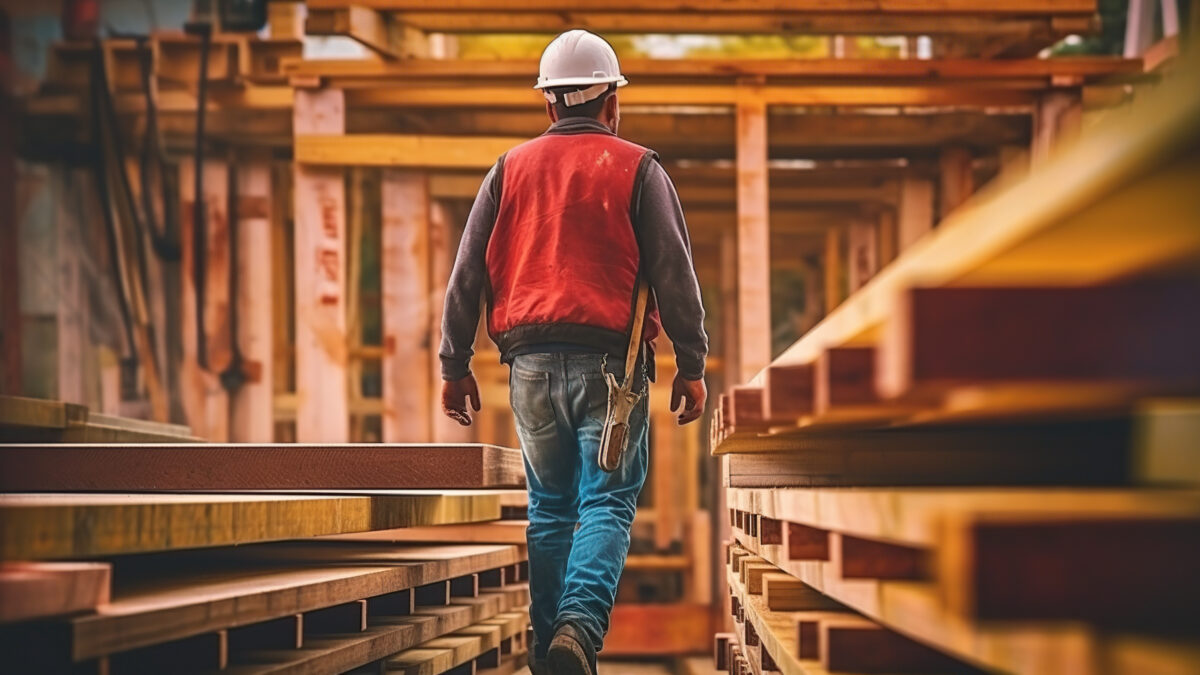INTRODUCTION
Have you ever found yourself standing in the middle of a timber yard or browsing an online catalogue, utterly bewildered by the assortment of timber options on offer? Or maybe you’re simply trying to understand the nuances of selecting the right structural timber for your home renovation or building project. In either case, I’m glad you’ve come across this blog post. Over the next few crucial paragraphs, we’ll delve into the world of structural timber, exploring what makes certain types ideal for specific uses, how to consider the right factors, and not to mention, thoroughly decipher the pros and cons of different types of timber.
Structural timber is the backbone of any building project and using the right type can often mean the difference between a structure that stands strong for decades and one that encounters issues down the track. Fortunately, armed with the right knowledge, selecting the correct timber becomes less a hit-or-miss task and more of an informed decision. Let’s make sense of it all, shall we
In this information-packed guide, we’ll uncover all the tips and tricks that are essential for selecting the right structural timber, thus aiding in your mission to build a safe, sturdy, and aesthetically pleasing structure. If you’re ready to dive in, then let’s roll up our sleeves and get started!

WHY is Timber Used in Construction?
Timber makes an excellent choice for construction due to a myriad of reasons. It’s a highly sort-after material thanks to its unique combination of structural strength, ease of use, and environmental benefits. Nature has spent millions of years perfecting wood as a structural material, and we’ve learned to harness these natural properties in our buildings.
The strength-to-weight ratio of timber is higher than that of steel and concrete – allowing for designs that incorporate long spans and complex shapes. Plus, it’s faster and safer to work with timber compared to other construction materials.
Lastly, timber is a renewable resource and the most environmentally friendly building material. It’s a carbon-neutral product that benefits from the natural growth cycle of trees, making timber construction an excellent choice for sustainable building projects.
WHAT Factors Matter When Selecting Timber?
When it comes to selecting structural timber, there are a few essential factors that must be weighed in. The type of timber, grade, moisture content, and treatment – these are terms you’ll become well-acquainted with when choosing timber for your project.
The type of timber affects its strength, durability, and appearance. For instance, hardwoods like oak or walnut are denser and typically more durable than softwoods such as pine or fir. The timber’s grade relates to its quality and structural performance, while moisture content can impact its stability.
Lastly, treated or untreated? Treated timber has been chemically processed to resist pests and decay, making it an ideal choice for outdoor projects or areas with high moisture. It’s essential to understand these factors to make a useful and informed choice.
WHEN Should You Buy Timber?
One common dilemma faced by builders and renovators is the ideal time to purchase timber for their project. Well, contrary to popular belief, there is no absolute “best time” to buy timber.
Rather, it would be best if you considered buying timber whenever it aligns with your project timeline and when you’ve taken into account its storage potential. Remember, timber can warp or split if not stored properly. Ensure you’ve space and conditions to store your timber correctly should you need to buy it well in advance of your build.
HOW Can You Identify Quality Timber?
Knowing how to spot high-quality timber is crucial in ensuring the longevity and success of your project. Good quality timber should be straight with no visible defects like knots, splits or bows. Also, pay attention to moisture content. Dry timber can be a sign of good quality as it’s less likely to warp or shrink.
Moreover, always choose certified timber. Certified timber comes with an assurance of responsible forest management and provides a guarantee of quality.
Assessing the PROS and CONS of Different Types of Timber
Like any other material, different types of timber come with their own sets of advantages and drawbacks. Hardwoods, for instance, offer high durability and strength but can be more expensive than softwoods.

Softwoods, on the other hand, are more readily available and cheaper but might not provide the same lifespan as a hardwood. It’s also worth noting that treated timber, while resistant to decay and pests, can be hazardous if not handled correctly, so always consider your specific usage to decide the best kind of timber for your project.
Tips to Keep in MIND While Buying Timber
Lastly, here are a few handy tips to keep in mind when purchasing timber. Always take the time to inspect your timber before buying; it’ll weed out any pieces with visible defects. Don’t be afraid to ask for help or advice; timber yard staff have a wealth of knowledge and will be more than happy to guide you through the process.
CONCLUSION
To conclude, selecting the right timber requires careful consideration of several key factors, including the type, grade, treatment, timing, and quality-check. But with this comprehensive guide in hand, you’re well on your way to making more informed, confident decisions when purchasing structural timber.
Remember, each project is unique, and thus, so are its timber requirements. Don’t shy away from seeking advice wherever needed—be it online, from timber yard professionals, or experienced builders. With every timber purchase, you’re not just buying a piece of wood; you’re investing in the backbone of your project. Choose wisely and build effectively, because the right choice will stand the test of time.


